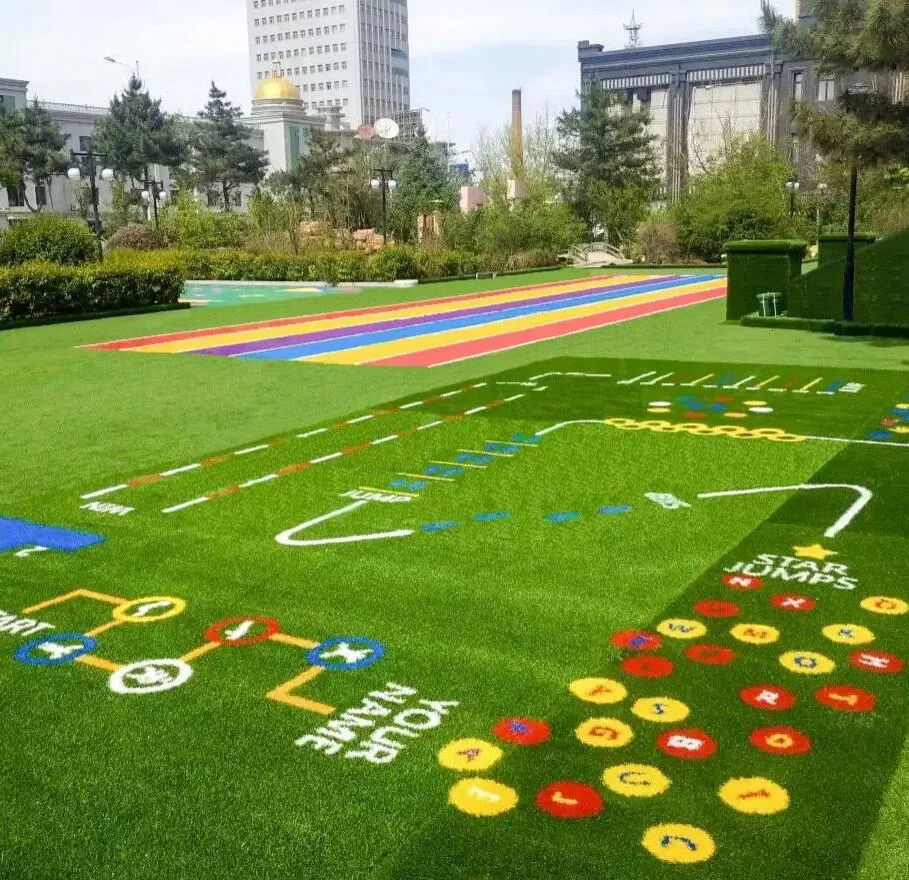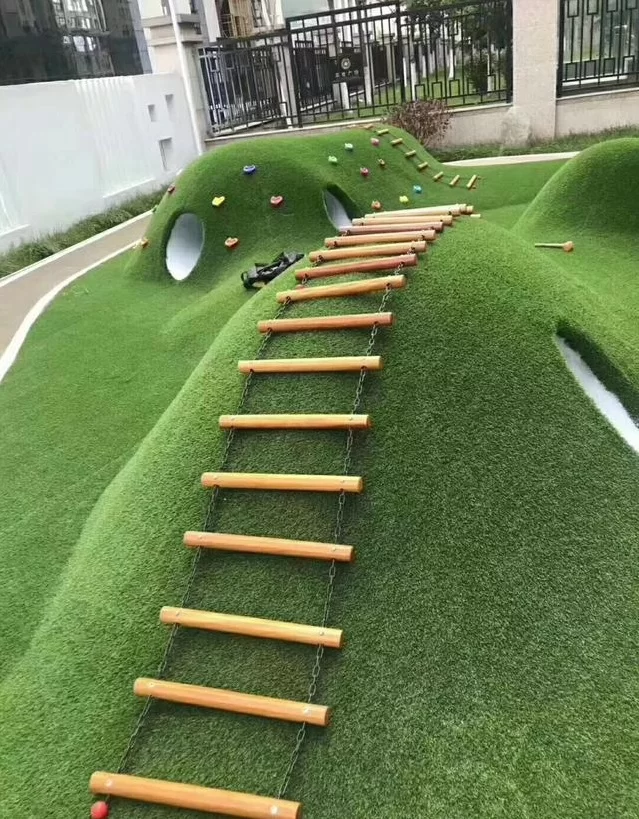

Natural playground grass varieties such as Bermuda grass, Kentucky bluegrass, and tall fescue are often chosen for their toughness and ability to withstand heavy foot traffic. These grasses create a soft surface that helps cushion falls, reducing the risk of injuries. However, maintaining natural grass on playgrounds can be challenging as it requires regular watering, mowing, fertilizing, and repair after heavy use or weather damage. Additionally, natural grass may develop muddy patches or bare spots in high-traffic areas, which can affect safety and aesthetics.
Artificial playground grass is an increasingly popular alternative, especially in schools, parks, and residential play areas. Made from synthetic fibers designed to closely mimic the look and feel of natural turf, artificial grass offers several advantages. It provides excellent cushioning and impact absorption to protect children during falls. Moreover, artificial grass is highly durable, resisting wear and tear from constant activity and weather exposure. Its excellent drainage properties prevent waterlogging, keeping the playground safe and usable even after heavy rain.
Maintenance of artificial grass is minimal—there is no need for watering, mowing, or fertilizing—saving significant time and resources. It stays green and neat throughout the year, regardless of season or climate, ensuring an inviting play surface at all times.
In conclusion, whether choosing resilient natural grasses or high-quality artificial turf, playground grass plays a key role in creating a safe, attractive, and functional space for children’s outdoor activities. Proper selection and maintenance of playground grass not only enhance safety but also encourage more active, healthy play in a welcoming environment.
Hit enter to search or ESC to close